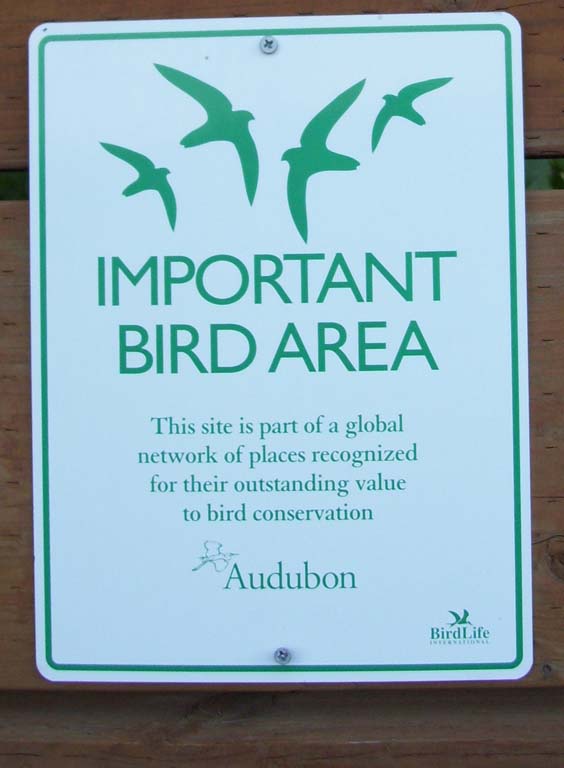
at the Deep Canyon Trailhead
Leading to the Hawkwatch Intl
Wellsvilles Site
Courtesy Bridgerland Audubon Society
Not all places on earth were created equal. Some places attract lots of birds, and some don’t. And some places support birds that are at more at risk of extinction than others. Those two simple statements are the basis of a worldwide effort to map Important Bird Areas or IBAs as they are called in the birding world. This effort has been led by Birdlife International which is a conglomerate of partnership organizations dedicated to the welfare of birds. To date, over 7500 IBA sites have been identified and described in over 170 countries.
In the United States, the partner for identifying IBAs is the National Audubon Society. Wayne Martinson and Keith Evans of the Wasatch Audubon Society have just completed a book about the IBAs in Utah called Utah’s featured birds and Viewing sites. Reading it, I learned that Utah has 21 different sites and more are under consideration. Many of Utah’s IBA’s are clustered around the Great Salt Lake . The largest ones in area are Gilbert Bay and the Deseret Land and Livestock Ranch.
Landowner permission is required for an area to be recognized in Utah. Furthermore, an IBA designation does not imply any oversight or management implications. It is merely a form of recognition of the unique nature of each site.
IBAs are designated to be of global, national or state significance. There are carefully-defined criteria for making the designation. To be considered globally significant, one of the following must be true for a given site:
- It must regularly hold significant numbers of a globally threatened species or
- It must regularly hold a significant population of narrow endemics or species with very limited distribution or
- It must regularly support exceptionally large numbers of migrating or congregating species
8 of Utah’s 21 IBA’s are considered of global significance. The globally significant sites include Gunnison Bay , Bear River Bay, Ogden Bay, Farmington Bay, Gilbert Bay of the Great Salt Lake, Deseret Land and Livestock Ranch, and the San Juan County/Gunnison Sage-Grouse IBA.
In the future, we’ll probably see more including Zion National Park based on the presence of Mexican Spotted Owl and California Condor, Parker Mountain based on Greater Sage Grouse , and Cutler Marsh-Amalga Barrens based on its large White-faced Ibis colony.
Each one of Utah’s important bird areas is an interesting subject in and of itself. You might just hear about a few of them in future episodes.
Credits:
Photo: Courtesy Bridgerland Audubon Society
Text: Stokes Nature Center: Holly Strand
Sources & Additional Reading:
Cutler Marsh-Amalga Barrens IBA site description https://www.audubon.org/important-bird-areas/cutler-reservoir-and-marsh-ut08
Ryder, Ronald A. and David E. Manry. 1994. White-faced Ibis (Plegadis chihi), The Birds of North America Online (A. Poole, Ed.). Ithaca: Cornell Lab of Ornithology; Retrieved from the Birds of North America Online: https://bna.birds.cornell.edu/bna/species/130
[Accessed December 2, 2010] Note: Moved by Cornell Labs to a subscription service, Birds of the World: https://birdsoftheworld.org/bow/species/whfibi/cur/introduction [Accessed September 19, 2021]
Important Bird Areas, Audubon Society, www.audubon.org/bird/IBA/ Note: Website changed to https://www.audubon.org/important-bird-areas
See also
https://www.audubon.org/important-bird-areas/state/utah
https://www.audubon.org/important-bird-areas/cutler-reservoir-and-marsh-ut08 [Accessed September 19, 2021]
Important Bird and Biodiversity Areas (IBAs), BirdLife International, https://www.birdlife.org/worldwide/programme-additional-info/important-bird-and-biodiversity-areas-ibas [Accessed September 19, 2021]
